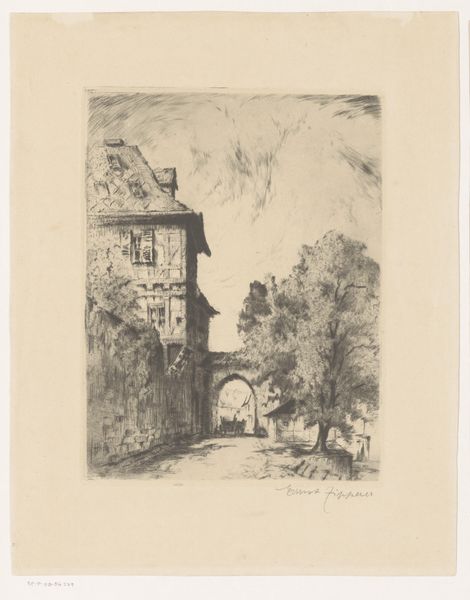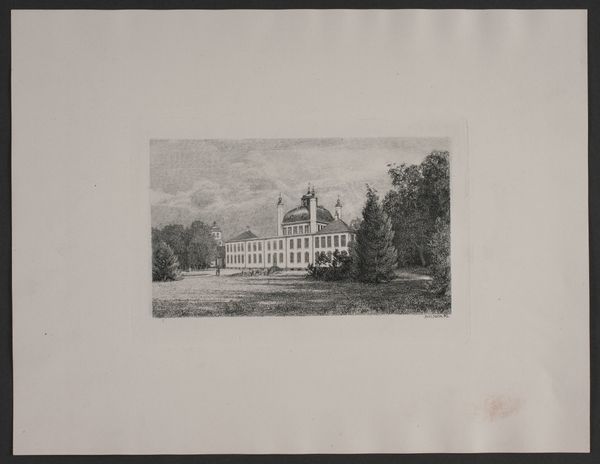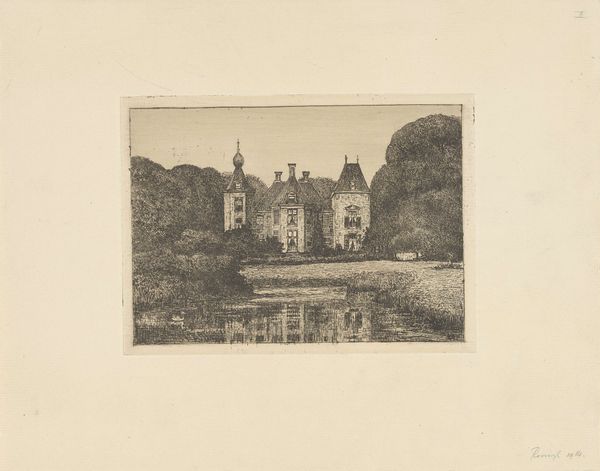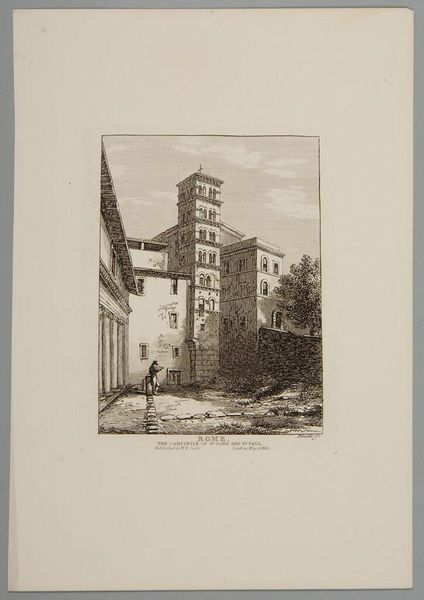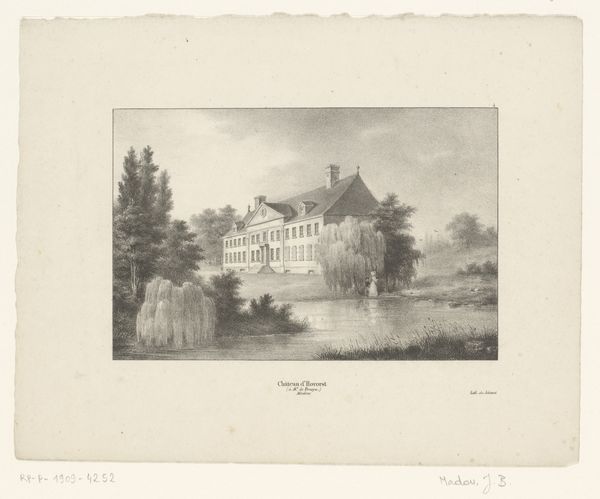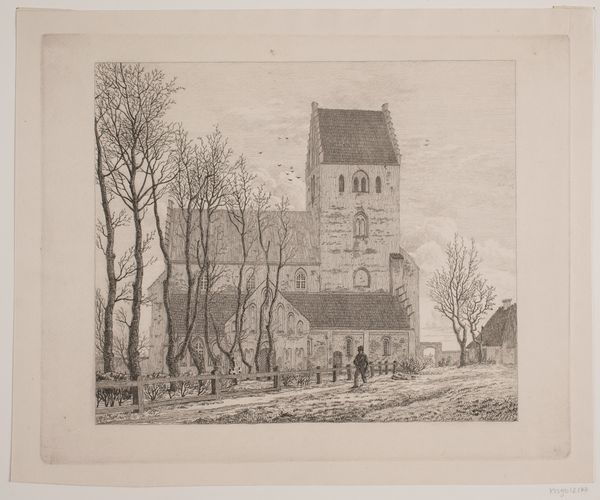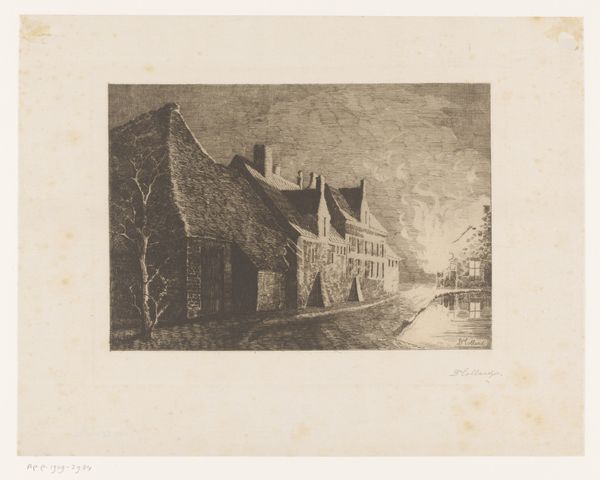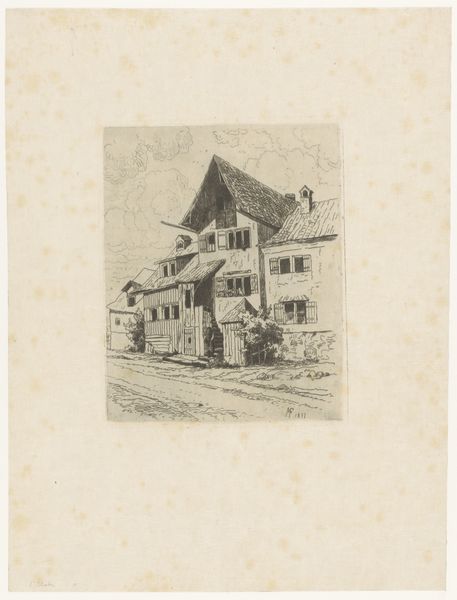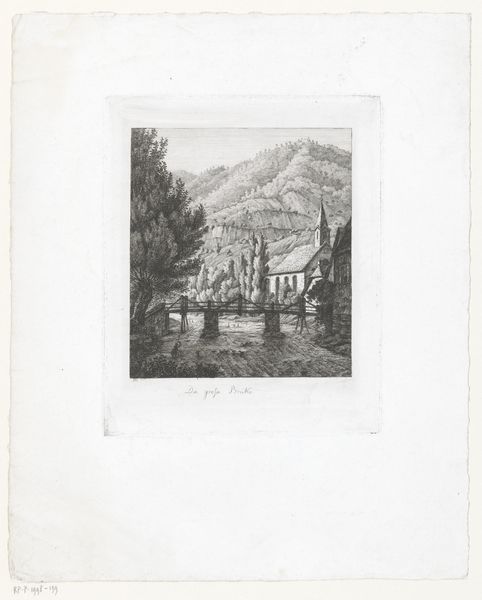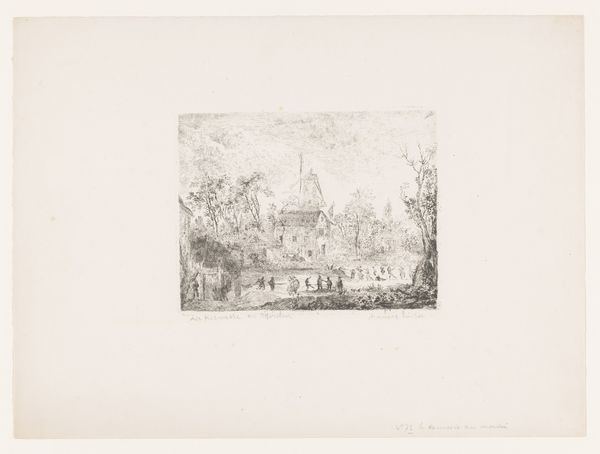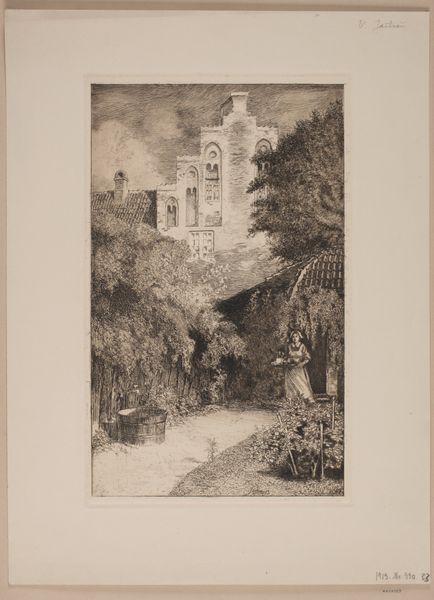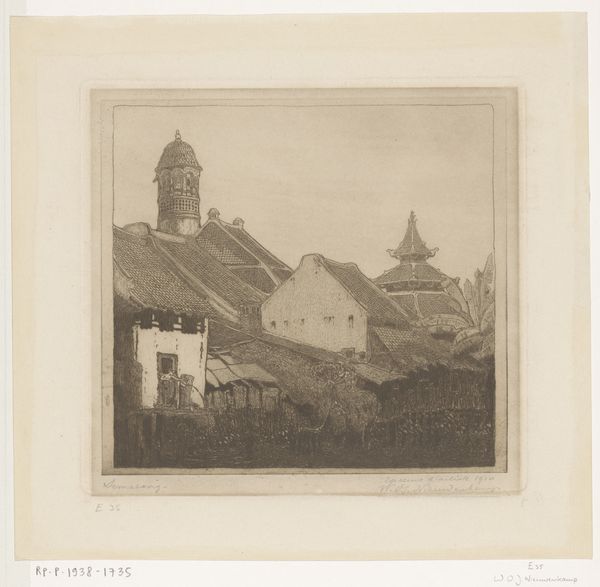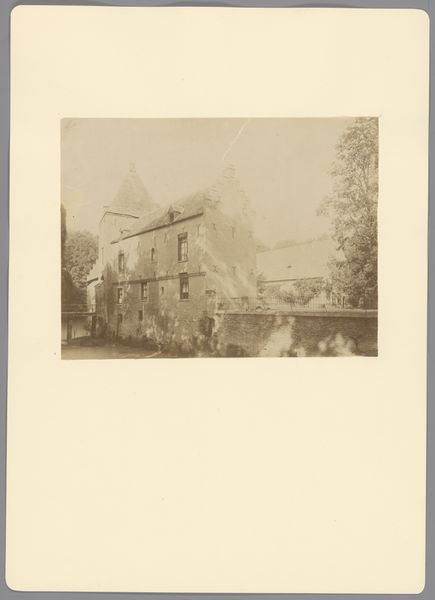
drawing, print, etching, paper
#
drawing
# print
#
etching
#
landscape
#
paper
Dimensions: 288 mm (height) x 232 mm (width) (billedmaal), 392 mm (height) x 314 mm (width) (bladmaal)
Curator: Immediately striking, isn't it? A kind of brooding romanticism in the monochromatic palette. Editor: Indeed. We are looking at an etching titled "Herregården," or "The Manor," created in 1909 by Chr. Benzon, currently residing in the collection of the SMK, the National Gallery of Denmark. The entire scene seems steeped in shadow and quiet mystery. Curator: Absolutely. The manor looms large, almost ghostlike, emerging from the surrounding trees, reflected dimly in what I presume is the still waters of a lake or moat. What resonates is the power dynamic symbolized by the structure – the social order made material. These buildings represent ownership, history, legacy… but shrouded in a melancholic air. Editor: The use of etching contributes to that effect. The fine lines create a sense of detail while maintaining an overall somber tone. Consider how Benzon uses light and shadow, drawing your gaze. How are we, as viewers, positioned in relation to the manor? Do we feel invited, or are we observing from a distance, excluded from the social circles held within its walls? Curator: A crucial point. Notice how the windows, the only distinct openings, are dark and vacant. This prevents human connection and adds a further psychological layer. Light here can be interpreted as representing knowledge and awareness, so its selective absence has a notable impact, perhaps emphasizing secrets. Editor: Or even oblivion. There's something undeniably spectral about the composition. And I am intrigued by how this imagery may have resonated in its time. What commentary could Benzon have been making about land ownership, or class structures at the beginning of the 20th century? What does it speak about in today's world? Curator: Etchings have a way of transporting us. The landscape speaks volumes about not only the individual but also the prevailing social mores of the period. A kind of haunting, beautiful echo. Editor: Indeed. And in a way, isn't all art a form of cultural memory? Curator: Yes, exactly. Thank you for your valuable input. Editor: Thank you for yours. It’s a constant exploration.
Comments
No comments
Be the first to comment and join the conversation on the ultimate creative platform.
